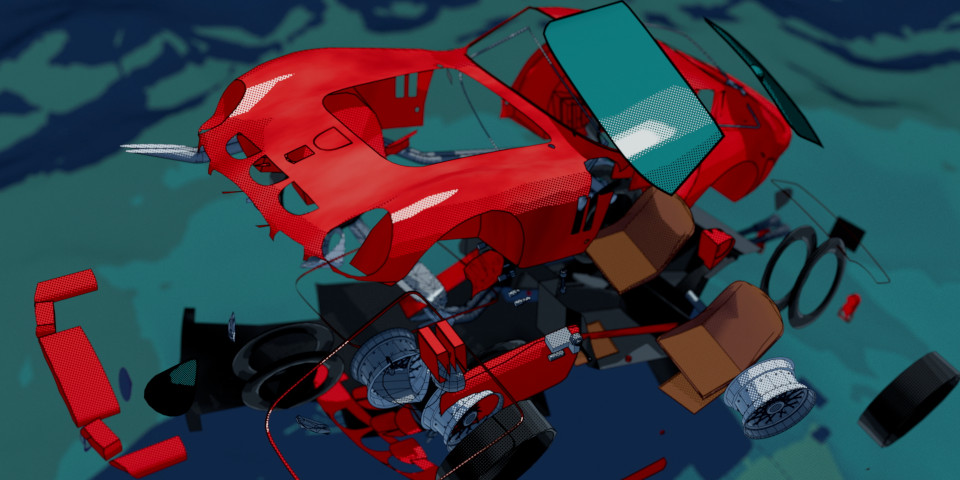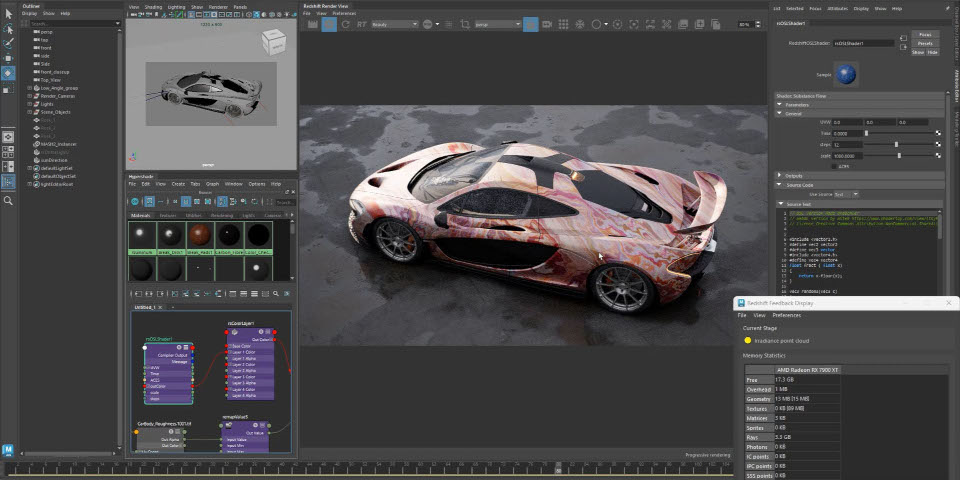Maxon releases Redshift 3.6
Maxon has released Redshift 3.6, the latest version of the production renderer.
It’s a major update, adding a new non-photorealistic rendering system, overhauling volume rendering and area lights, and introducing official support for rendering on AMD GPUs.

A render created by helloluxx using Redshift 3.6’s new NPR capabilities.
New non-photorealistic rendering capabilities
Redshift 3.6 introduces a fully fledged new non-photorealistic rendering (NPR) system, building on the MatCap shader node introduced last year in Redshift 3.5.17.
Its components include a new Toon Material node, for cel shading, a Contour shader, for outline rendering, and a Tonemap Pattern shader, for creating half-tone shading and similar effects.
You can get a feel for its capabilities at 00:30 in the video at the top of the story.

Redshift 3.6’s new Jendersie-d’Eon method for approximating light scattering in clouds (right), compared to the old Henyey-Greenstein method.
Better volume shading and support for volume displacement
The release also refactors Redshift’s volume sampling and shading system.
The Standard Volume shader can now be manipulated via shader nodes, making it easier to add fine detail, and now works within global environment fog.
In addition, the new Jendersie-d’Eon method for approximating the scattering of light by atmospheric particles should result in more realistic rendering of clouds and fog.
The update also adds support for volume displacement, making it possible to displace a volume by manipulating the incoming position data of a volume grid.

Updates to area lights, particle rendering, and official support for AMD GPUs
Other changes include alpha masking for area lights, letting users create gobos with textures.
Mesh lights have been reworked, and obey visibility and light linking rules, bringing them in line with other area lights. Sampling and handling of AOVs has also been improved for mesh lights.
Other changes include support for additive particle rendering, and a ray bounce level output for the State shader.
Last but not least, OSL (Open Shading Language) is now supported within HIP, meaning that Redshift is now officially supported on AMD GPUs, after two years in public preview.
The renderer was previously only officially supported on NVIDIA and Apple Silicon hardware. You can find a list of supported GPUs here.
Price and system requirements
Redshift 3.6 is available for Windows 10+, glibc 2.17+ Linux and macOS 12.6+.
The renderer’s integration plugins are compatible with 3ds Max 2018+, Blender 2.83+, Cinema 4D R21+, Houdini 17.5+ (18.0+ on macOS), Katana 4.0v1+ and Maya 2018+.
The software is rental-only, with subscriptions costing $45/month or $264/year.
Read an overview of the new features in Redshift 3.6 on the software’s Trello board
Read a full list of changes in Redshift 3.6 on the Redshift forum
(Login required)
Have your say on this story by following CG Channel on Facebook, Instagram and X (formerly Twitter). As well as being able to comment on stories, followers of our social media accounts can see videos we don’t post on the site itself, including making-ofs for the latest VFX movies, animations, games cinematics and motion graphics projects.
